Why these cafe owners say Turkish-style coffee is a surprise hit (if you know how to drink it)
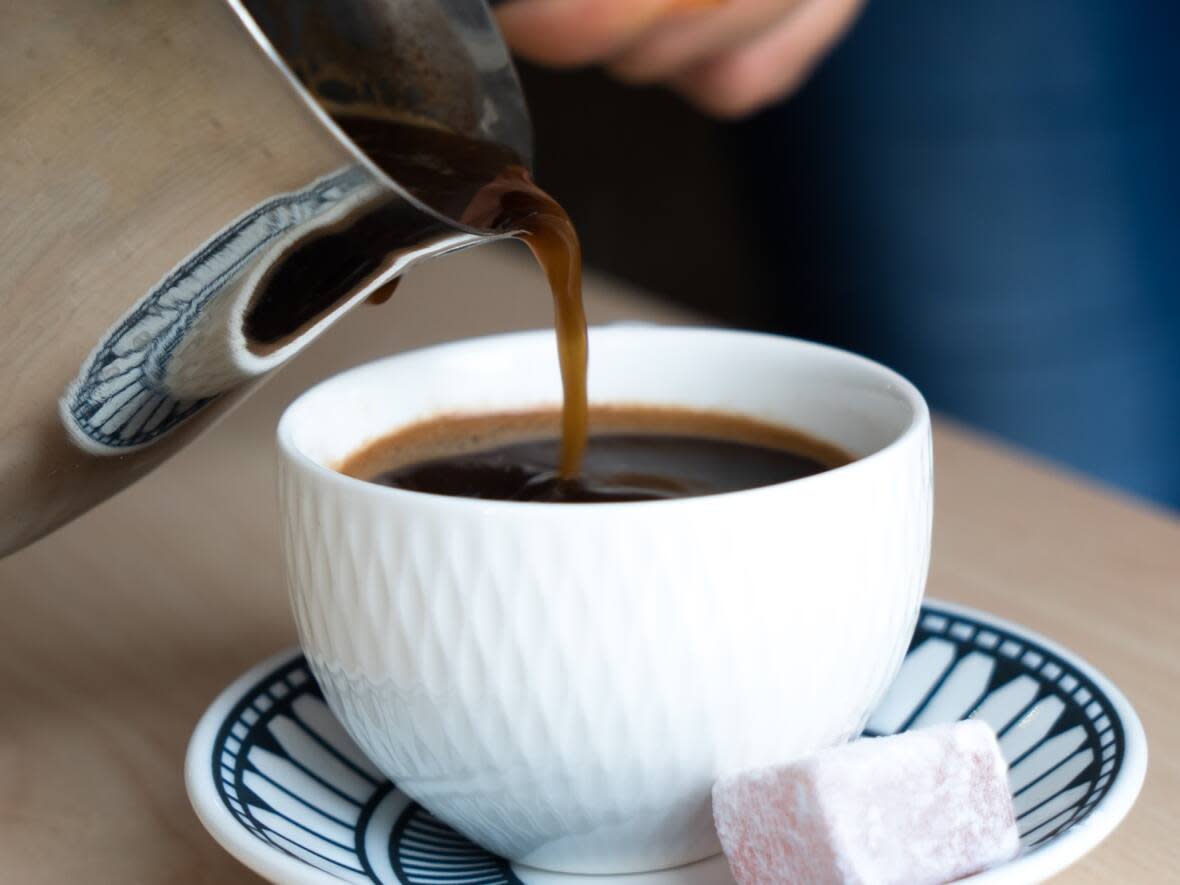
Though many Canadians wake up to a "double-double" each morning, those from different cultures say interest is brewing in other coffee preparation methods from around the world.
Turkish coffee: Don't put the Turkish delight in your cup
Though she's half-Filipino and half-Lebanese, Yesmine El-Ayoubi grew up drinking Turkish-style coffee, which is popular across the Middle East.
Now, she serves this brew at the brunch spot Mazarine she runs with co-owner Selina Qaqish, who grew up in Jordan.
But for El-Ayoubi, the best part is what happens after you drain your cup.
"You flip it upside down and it becomes kind of a ritual," she said, explaining there's usually an elder at family gatherings who will read the future based on your coffee grounds.
"You can take it as seriously as you want, but it's typically just a fun game."
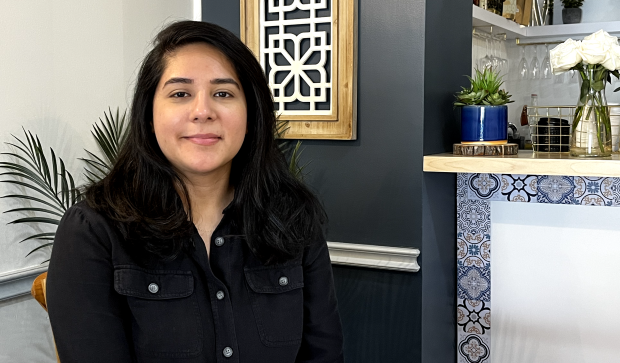
To make Turkish coffee, you use a very fine, almost espresso-like blend.
First, you boil water in a copper pot called an ibrik, which was traditionally heated on a pan of sand (El-Ayoubi says a stove will do). Then you add the grounds and sugar, before boiling it again.
When the coffee starts to rise nearly to the top, you know it's ready.
"Your first sip is pretty strong. When you get to the end of it, it starts getting even stronger, because the sediments of the ground are sitting at the bottom of your cup," explained El-Ayoubi.
El-Ayoubi typically serves the drink black with a confection called a Turkish delight on the side to cut the bitterness.
She often finds herself gently telling customers not to put the dessert in the drink.
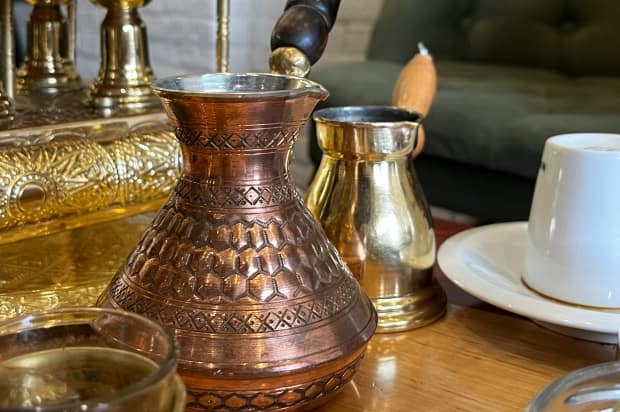
At the restaurant, El-Ayoubi and Qaqish say they're seeing a growing interest in the Turkish brew, especially as the weather cools.
"We didn't anticipate that it would get that huge of a hit," said El-Ayoubi, who says it's the top drink on the menu in cooler months.
"We just wanted to bring it in and see people's reaction, which is way better than we anticipated."
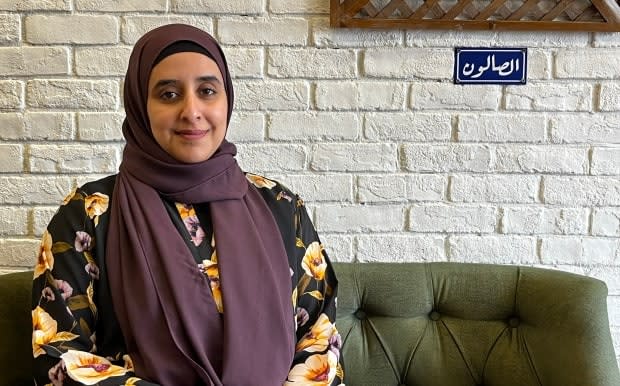
Yemeni coffee: Green and high in caffeine
For Abeer Al-Shaibani, co-owner of 3Cents Cafe, coffee is more than just a beverage, it's embedded in her culture.
In fact, like many from Yemen, Al-Shaibani claims her home country as the birthplace of the hot beverage, specifically in the city of Mocha, on the Red Sea.
Growing up, Al-Shaibani's mother started each day preparing a carafe of coffee, despite the effort involved.

Yemeni coffee can take up to an hour to prepare, including half an hour just roasting the beans until the shell separates. A few beans are then mixed with the grinds to boil in a copper pot, alongside spices like cardamom, cloves and cinnamon.
"It depends on the person how he likes his coffee, more spices or less," said Al-Shaibani, explaining everyone has their favourite recipe.
"Some towns in our country put some cayenne pepper to make it more flavourful."

The final brew is served either in small espresso cups or short glass cups and is greenish-brown. But don't let the light colour fool you, Al-Shaibani says it's very high in caffeine, and in flavour.
"This is how you enjoy a good coffee, you smell it first then you take a sip. Then you taste it over your mouth," she said.
"I'm an addict, I'd know."
Vietnamese coffee: Slow and sweet
For Nara Sok of Parlé Vietnamese restaurant in the ByWard Market, a love of coffee came when he was quite young.
He remembers his parents ordering the drink at a pho restaurant. Fascinated by the traditional Vietnamese drip method, he begged for a sip — and was often obliged.
"You can only imagine as a kid when you try it for the first time, you're so hyper for the whole day," Sok laughed.

When Sok and his partner Binh Quach opened the restaurant earlier this year, they noticed few places offered the traditionally-prepared drink and decided to incorporate it in their menu.
To make it, you start by placing the grinds in a small metal filter called the Phin. Then, you pour condensed milk in a glass and place the filter on top. Finally, pour hot water in the filter and wait for it to drip through.
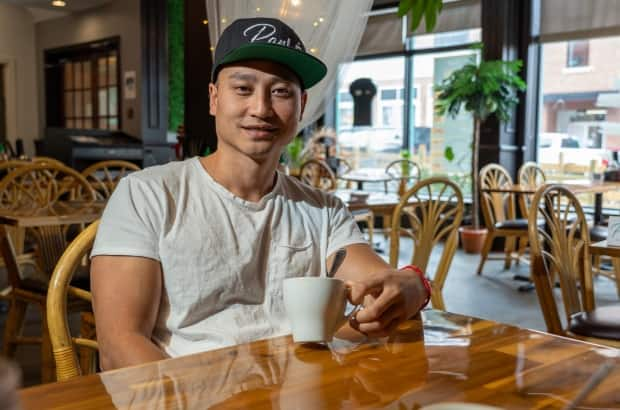
According to Quach, that time is an important part of the morning process.
"You have to sit down, enjoy and relax ... it will take a while," he said. "After that you drink it up, it's very strong. You cannot stay away from it."
For Sok, that strong brew is key to Vietnamese culture.
"Night markets, working in factories ... Vietnamese culture is working hard and working a lot, and coffee is an aid to that."
"If you've never had Vietnamese coffee before you gotta try it."


